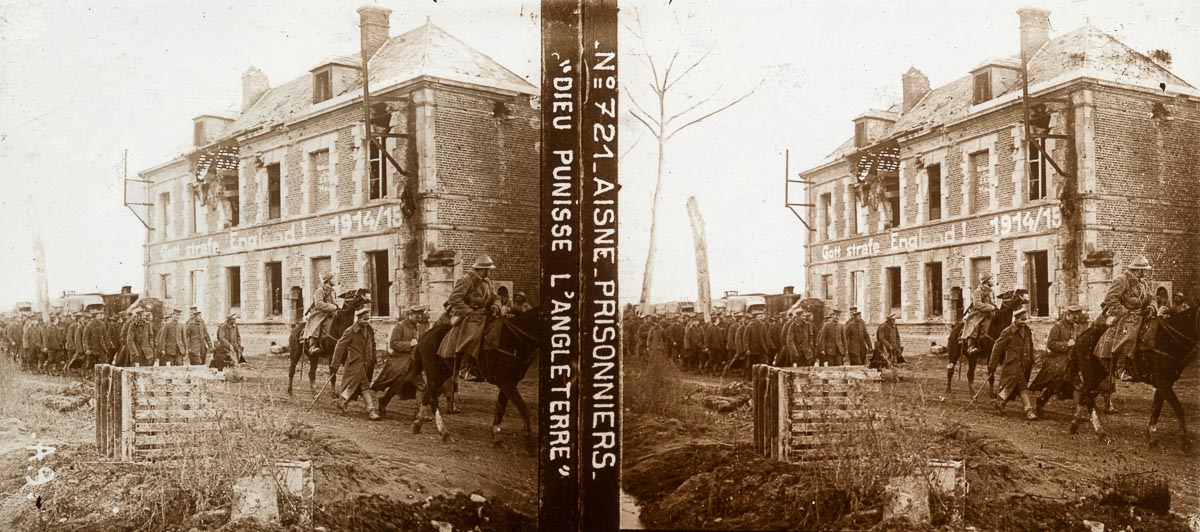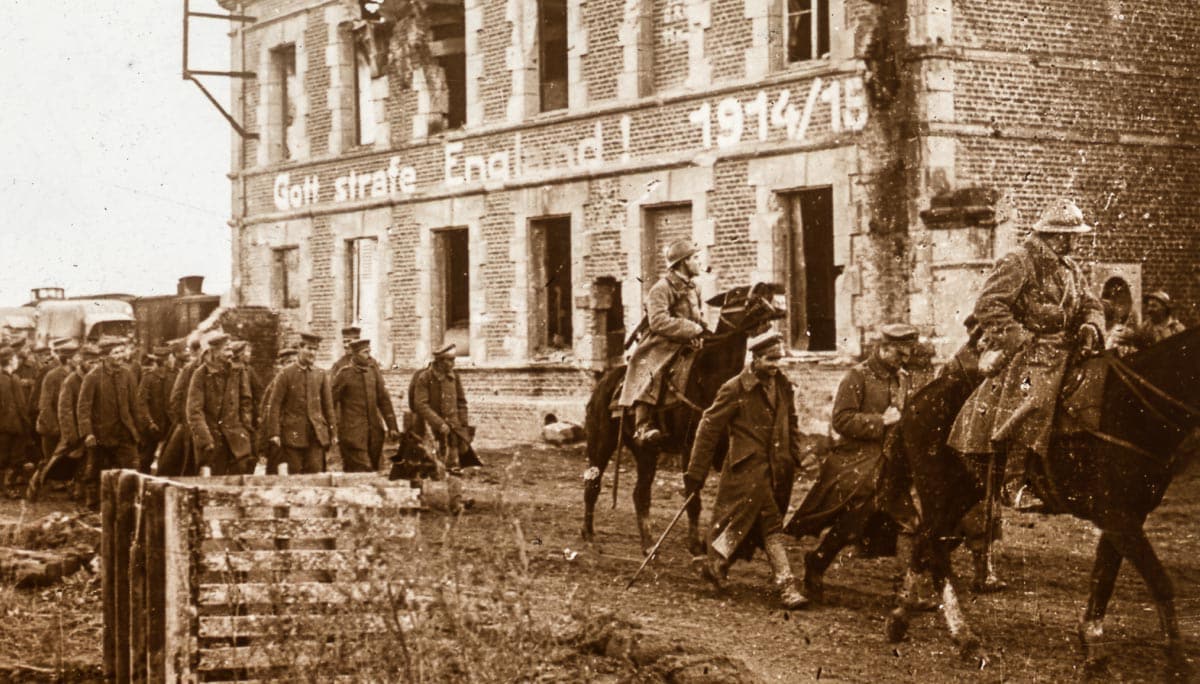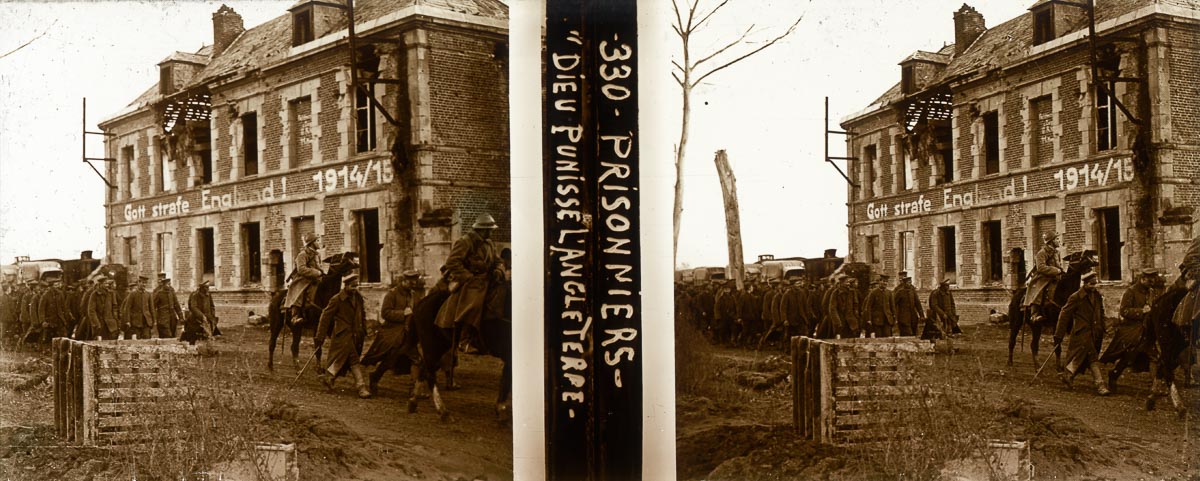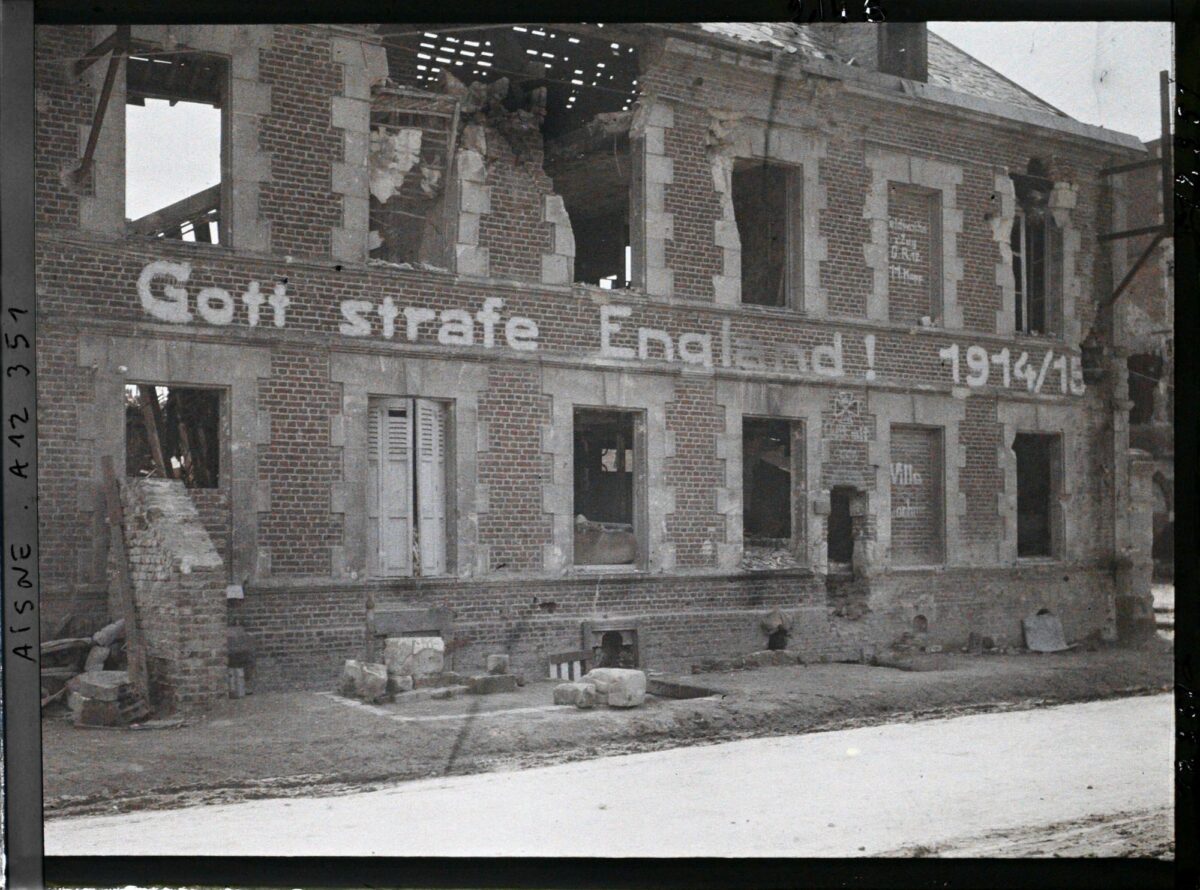
6 x 13 cm glass stereoview published by Brentano’s Paris

The stereoview shows a group of German prisoners of war, guarded by French soldiers on horses. They are walking along a house with the text Gott strafe England! 1914/15. The photo was taken in the village of Bucy-le-Long in Northern France.
Gott strafe England (“May God punish England”) was a slogan used by the German army during the First World War. The slogan came from the German poet Ernst Lissauer, who was also the writer of the poem Hassgesang gegen England (“Hate song against England”)1. The text on the facade dates from the time that Bucy-le-Long was occupied by German troops and reflects the nationalistic sentiments at the beginning of the war.

45 x 107 mm glass stereoview published by Brentano’s Paris
Great Britain had promised to support the Belgians if their neutrality was violated. On 4 August 1914, the German armies crossed Belgium territory to launch their attack on France. The same day, Great Britain declared war on Germany. The involvement of the British would ultimately hit the Germans hard. The British Royal Navy blocked the sea routes to Germany, causing food and raw material shortages during the war. The German navy tried to break through the blockade during the Battle of Jutland in 1916. It became one of the greatest naval battles in history. Although the Germans managed to sink more British ships, the British naval blockade remained intact and was one of the reasons Germany had to surrender in 1918.
The text on the facade inspired more photographers. This autochrome was made in June 1917 by Fernand Cuville of La Section Photographique de l’Armée.

9 x 12 cm autochrome by Fernand Cuville
Source: musée départemental Albert-Kahn
Inventory number: A12351 (public domain)
Glossary: autochrome
References
- Ernst Lissauer. Via: en.wikipedia.org ↩︎
